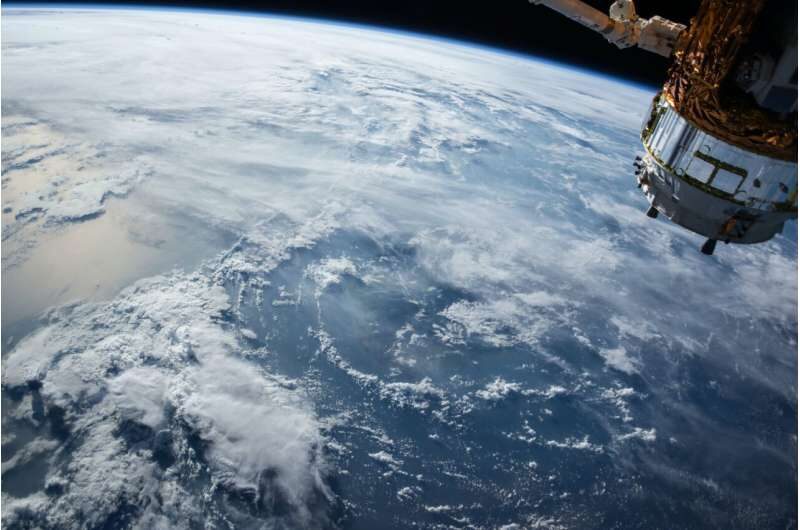Experts from the University of Reading have found that using satellite data that is less reliable but is returned to Earth rapidly can be used to improve the accuracy of solar wind forecasts — which are harmful streams of charged particles sent from the sun — by nearly 50%.
Their research, published today in Space Weather, could pave the way for agencies, such as the Met Office, to provide more accurate forecasts for severe space weather, which can cause blackouts and harm human health.
Lead researcher Harriet Turner, from the University of Reading's Department of Meteorology, said, "We know lots about how to prepare for storms that form on Earth, but we need to improve our forecasts of the dangerous weather we get from space. Space weather threatens our technology-focused way of life as it can cause power grids to fail, damage satellites, such as GPS, and even make astronauts ill.
"Our research has shown that using rapid satellite measurements to forecast space weather is effective. By sending spacecraft far from Earth, we can use this new technique to get better solar storm predictions and ensure we are prepared for what's to come."
Simon Machin, Met Office Space Weather Manager, said, "This is a great example of the value that can result through our collaboration with academia. By pulling through scientific research into the operational domain, improved space weather forecasting will ultimately enhance our nation's ability to prepare for and mitigate against space weather events."
Old dogs and new tricks
To predict space weather, scientists need to forecast the solar wind conditions at Earth. To do this, they combine computer simulations with observations from space to estimate what space weather will be like. This is known as data assimilation. The highest quality observations only become available many days after they are made, as they are processed on the ground and "cleaned," meaning forecasts take longer to achieve.
To obtain forecasts faster, the research team tried using near-real-time (NRT) data. NRT data undergoes no processing or cleaning, meaning it is less accurate but can be made available within a couple of hours. The research team found that forecasts produced using the NRT data still produces reliable predictions and enables greater warning time. This could enable authorities to better prepare for power failures that cost up to 2.1 trillion dollars over a century in the U.S. and Europe.
To the stars
The scientists behind this new study say using this new technique with upcoming space missions will enable better forecasts.
The European Space Agency (ESA) will launch "Vigil" in the mid-2020s, a first-of-its-kind mission that will monitor potentially hazardous solar activity using a number of U.K.-built instruments.
By launching the spacecraft into a position 60 degrees behind Earth in longitude, the Met Office will be able to improve space weather forecasts by using data assimilation of the NRT solar wind data.
It is hoped the unique location of Vigil will allow scientists to see the solar wind that will later arrive at Earth, maximizing forecast accuracy and warning time.
More information: Harriet Turner, Mathew J Owens, Matthew Simon Lang, et al. Solar wind data assimilation in an operational context: Use of near-real-time data and the forecast value of an L5 monitor., Space Weather (2023). DOI: 10.1029/2023SW003457
Journal information: Space Weather




Comment: Western governments have spent more resources on teaching the general public about gender dysphoria than space weather, the average person has no knowledge of it, never mind them 'preparing' for the time that a severe solar storm does strike. That said, it's notable that more funds are being ploughed into space weather matters because there are a variety of signs that show an uptick in activity and an increase in its severity is in process:
- Powerful Solar storm has unusually strong impact on Earth, delays SpaceX rocket launch, stalls oil rigs in Canada
- Earth dodges one of the fastest CMEs ever recorded
- Moon mystery: China, Japan scientists have no answers for space gear disappearances
- China-Russia Consortium space weather center established in Beijing
And for more, check out SOTT radio's: